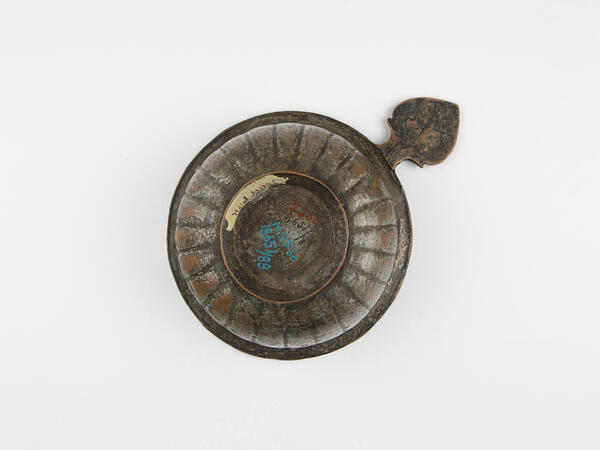The Historical and Memorial Museum of the Demidovs presents a charka cup — a hallmark of life in Russia in the olden days. It was made in the Urals in the first half of the 18th century.
A charka cup was used for drinking strong spirits. They were fashioned into a variety of shapes and decorated with niello, enamel or stamped patterns. In addition to charkas, many different types of drinking utensils were also produced in the Urals: cylindrical glasses, mugs, tall shot glasses with a smooth or stamped surface and in the shape of a truncated cone. Mugs were richly decorated in a variety of ways — apart from the usual stamped shells and floral motifs of products made in the Urals, they often featured narrative imagery.
The volume of the charka cup deserves special attention. The oldest Russian unit for measuring liquids was the bucket. This unit of volume existed from the very beginning of Russian history and was used across all its territory. It is worthy to note that this measure acted as a central unit, which meant that all other units were derived from it: for example, the barrel was larger than a bucket and the charka was smaller. Large volumes were divided into buckets, and there were different units depending on how many buckets a certain unit could hold. The reverse was true for smaller volumes — they had different names depending on what part of the bucket they made up. These smaller units were especially prominent in everyday life and small trade. Without indicating what part of a bucket or how many buckets there are in a set volume any unit became meaningless.
Until the middle of the 17th century, the so-called “state” bucket (12 liters) contained 100 charkas (0.123 liters). A charka was also a unit for measurement volume of liquids, that was used in Russia before the introduction of the metric system. It was otherwise known as a “sotka”, meaning “a hundred”. From the 16th century, new units of measuring volume appeared that were smaller than the bucket. From 1531, one bucket was equal to10 stops or 100 charkas. As we can see, the units usually refer to alcohol — this is all in relation to the regular bucket and not the Moscow drinking bucket. A charka was 143.5 grams (which is almost 150 grams) — the Moscow “standard” single portion of vodka. It would be fitting to recall some common expressions regarding the charka such as “bring the charka”, “downed a charka”, “a charka of vodka”, “poured a charka for the guest, and drank a couple himself”.




